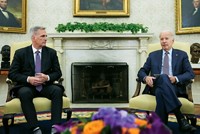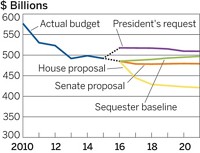Advertisement
Grab your lab coat. Let's get started
Welcome!
Welcome!
Create an account below to get 6 C&EN articles per month, receive newsletters and more - all free.
It seems this is your first time logging in online. Please enter the following information to continue.
As an ACS member you automatically get access to this site. All we need is few more details to create your reading experience.
Not you? Sign in with a different account.
Not you? Sign in with a different account.
ERROR 1
ERROR 1
ERROR 2
ERROR 2
ERROR 2
ERROR 2
ERROR 2
Password and Confirm password must match.
If you have an ACS member number, please enter it here so we can link this account to your membership. (optional)
ERROR 2
ACS values your privacy. By submitting your information, you are gaining access to C&EN and subscribing to our weekly newsletter. We use the information you provide to make your reading experience better, and we will never sell your data to third party members.
Policy
Hard Sell
Science leaders urge engagement in 2012 election
by Andrea Widener
April 2, 2012
| A version of this story appeared in
Volume 90, Issue 14
The science and technology community needs to push the public and politicians to support basic scientific research in November’s presidential election—before funding cuts brought on by the tough economy and looming federal debt cause long-term damage.
That was the message of science leaders from government and industry at a meeting last month in Washington, D.C., sponsored by Research!America, a nonprofit group that advocates for research funding. The gathering drew some 220 attendees to discuss the future of R&D support.
“This election … is the most important election of my lifetime, and it is the most important election for the future of science in our country,” said John E. Porter, the organization’s chair and a former Republican congressman from Illinois, in introducing the session. “We need to overwhelm the lawmakers and others across this country with the message that this has to be the highest priority, and we can’t allow our worldwide leadership to slip.”
In the current presidential campaign, science comes into the discussion only as part of a controversy, such as stem cell therapy. Mary J. C. Hendrix, president of Northwestern University’s Children’s Memorial Research Center, suggested that science advocates should make a strong effort to move discussions beyond such issues to focus on the importance of basic science.
“I hope the topic comes up soon so that we can begin to discuss the importance of investing in very basic research,” Hendrix said.
Research should be an easy sell in such hard economic times because it has a proven high return on investment, National Science Foundation Director Subra Suresh said. But the long-term nature of basic research makes that a difficult argument for nonscientists to buy into. “One of the problems we have is that we only have a short-term perspective based on what needs to be done tomorrow,” he said.
Many businesses recognize and support the importance of federal funding for research and science education, said John J. Castellani, president and chief executive officer of the trade group Pharmaceutical Research & Manufacturers of America. “For our companies to be effective, they have to be part of a vibrant scientific ecosystem,” he said. “We need a basic education system in the country that produces the scientists and the clinicians and the engineers that build our factories, discover our medicines.”
If the message doesn’t get across, the consequences could be dire, explained National Institutes of Health Director Francis S. Collins. Already, NIH has lost 20% of its purchasing power over the past nine years since its budget was doubled. Currently, only one in seven grants is funded, the lowest rate in history, he said.
The grant funding situation would get even worse under automatic budget cuts, called sequestration, that are set to go into effect in January 2013 if a compromise plan is not passed. Sequestration is looming for all federal agencies because a bipartisan congressional committee failed last fall to agree on a plan to cut $1.2 trillion from the federal budget (C&EN, Nov. 28, 2011, page 28). That triggered the automatic budget cuts under the Budget Control Act of 2011. For both NIH and NSF, sequestration would mean an 8 to 10% budget cut, according to Collins and Suresh.
At NIH, large budget cuts would be a “very, very damaging hit,” Collins said. The agency operates on a four-year grant cycle, so much of the money NIH gets each year is already committed. “We would lose the ability to fund about 2,300 [new] grants,” he noted. The grant success rate, now about 14%, would drop by “another very substantial factor,” he said.
Although NSF’s grant success rate is somewhat higher, at 22%, it faces much the same scenario, Suresh explained. Sequestration would almost certainly mean cuts to areas that the agency has worked to protect: graduate students, postdoctoral fellows, and early-career faculty members. “It would have a devastating effect on trying to attract young people into science,” he said. “My hope is that January of next year is still very far away, and a lot of things can happen between now and then,” he said.
Michael N. Castle, a former Republican congressman from Delaware, agreed, saying he suspects that after the November election, members of both parties will work something out. “I can tell you that they don’t like the idea of coming in with a hatchet and making those cuts,” he said. “There will be some cuts, obviously, but not quite the way it is spelled out in sequestration.”
The way to take science out of that equation is to frame research in terms that the public can understand, Castellani said. “It is about hope for the future. It is about economic growth. It is about jobs,” he said. “That’s why research is being pursued by China, by Russia, by India, by Brazil. Everyone in the world gets it. It is incumbent on the United States to get it before we lose it.”






Join the conversation
Contact the reporter
Submit a Letter to the Editor for publication
Engage with us on Twitter